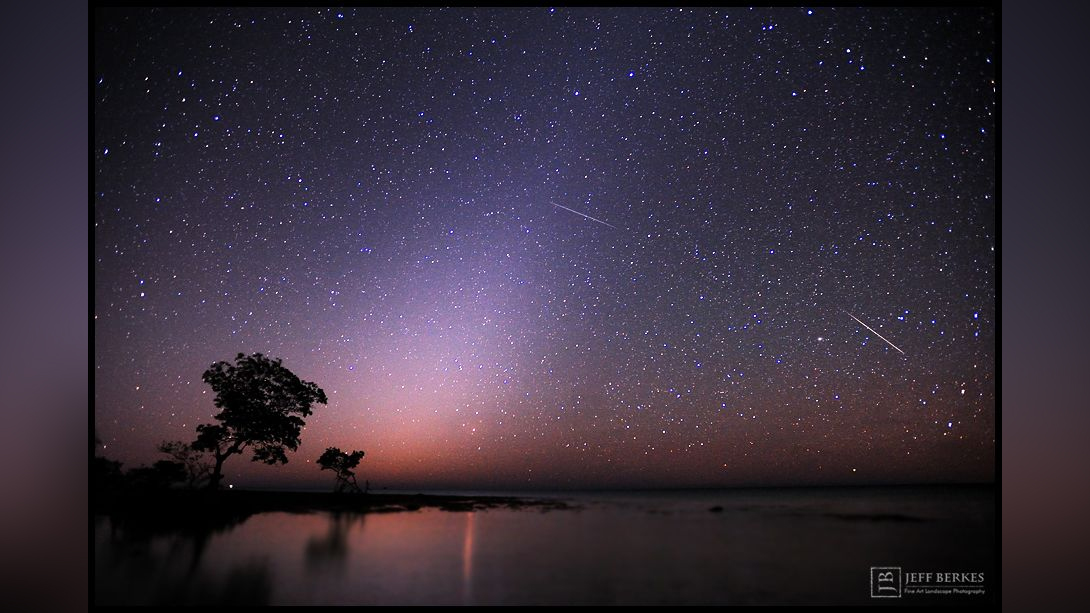It’s official: 2024 is the year of
Peach Fuzz. That’s according to the team of forecasters at the Pantone Color Institute, which has elected this gentle, orangey-pink hue as Color of the Year. The hue “echoes our innate yearning for closeness and connection” and is “radiant with warmth and modern elegance,” the institute’s executive director, Leatrice Eiseman, said in a statement.
It’s a color reminiscent of sunrise or a nice summer’s day, says Lauren Labrecque, a marketing researcher specializing in color at the University of Rhode Island. While she isn’t always a fan of Pantone’s choices—such as 2021’s pair of gray and yellow—she loves this year’s “soft, warm, fuzzy” selection.
On supporting science journalism
If you’re enjoying this article, consider supporting our award-winning journalism by subscribing. By purchasing a subscription you are helping to ensure the future of impactful stories about the discoveries and ideas shaping our world today.
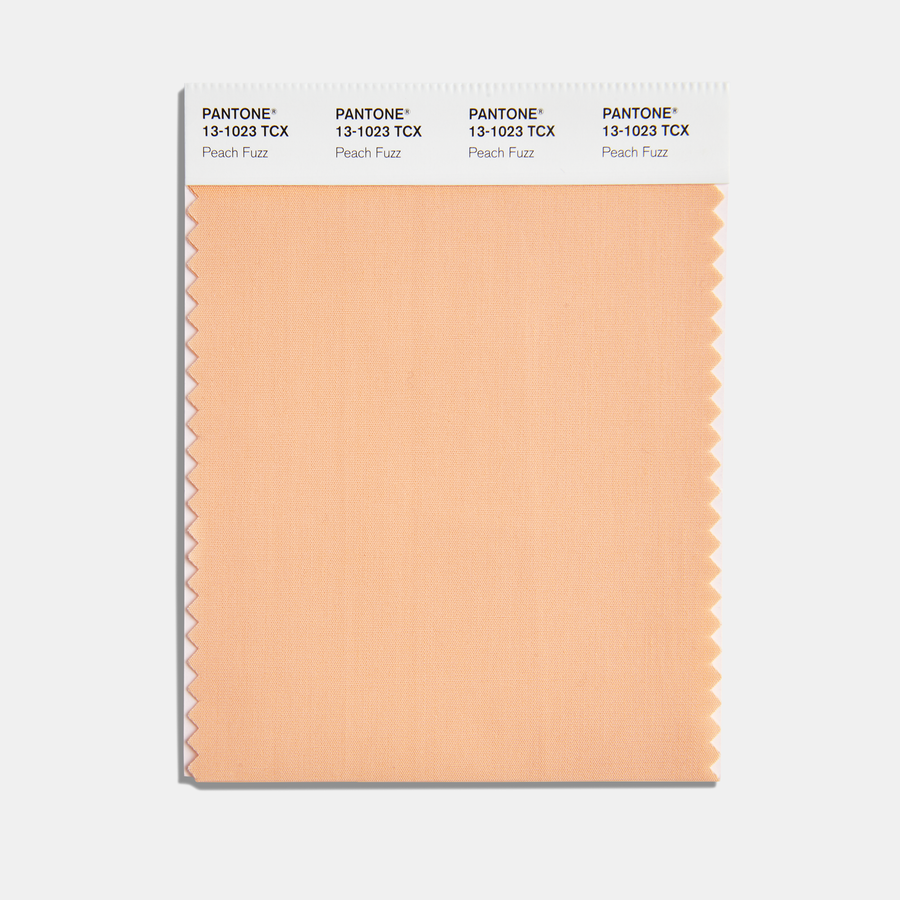
Pantone’s Color of the Year for 2024 is PANTONE 13-1023 Peach Fuzz. Credit: Pantone
“This one in particular I thought was spot-on,” Labrecque says, adding that after years of conflicts, crises and economic struggles, there’s a yearning in the air for something soothing and warm. This year’s softly bright shade, she says, “sort of captures the zeitgeist: moving forward, hoping to focus more on positivity and warmth.”
After Pantone’s annual announcement, designers and marketers across industries such as fashion and web design will often incorporate the color into their products. Though it’s hard to disentangle whether Pantone is setting the trend or responding to ones already in motion, Labrecque says it’s likely a bit of both.
This year’s pick is not quite a pastel, but it’s lighter than last year’s bold, saturated shade,
Viva Magenta, and a bit of an inversion of 2022’s rich blue-purple hue, Very Peri. “A lot of it is about what people crave,” says Elizabeth Johnson, a neuroscientist who has studied the color visual system and teaches marketing at the University of Pennsylvania. Peach Fuzz “feels a little nostalgic to me,” she says, “like a nod to 1940s and 1950s makeup [packaging].”
If this color feels nostalgic, fuzzy or comforting, that’s likely a learned association, Johnson explains. Very little about color is hardwired into our brain. We know that the human visual system is especially sensitive to greens and highly attentive to reds. But beyond that, any aesthetic associations with colors have likely been picked up through experience and culture.
Peach Fuzz–like colors occur all over the natural world, from land to sea to space; we have compiled a series of images featuring the captivating color.

Lake Tyrrell, the largest salt lake in Australia’s state of Victoria, spends most of the year as a dry salt flat. Photographed here with a drone at sunrise, the lake bed gets its pinkish color from microalgae that produce pink compounds called carotenoids as a stress response in briny environments.
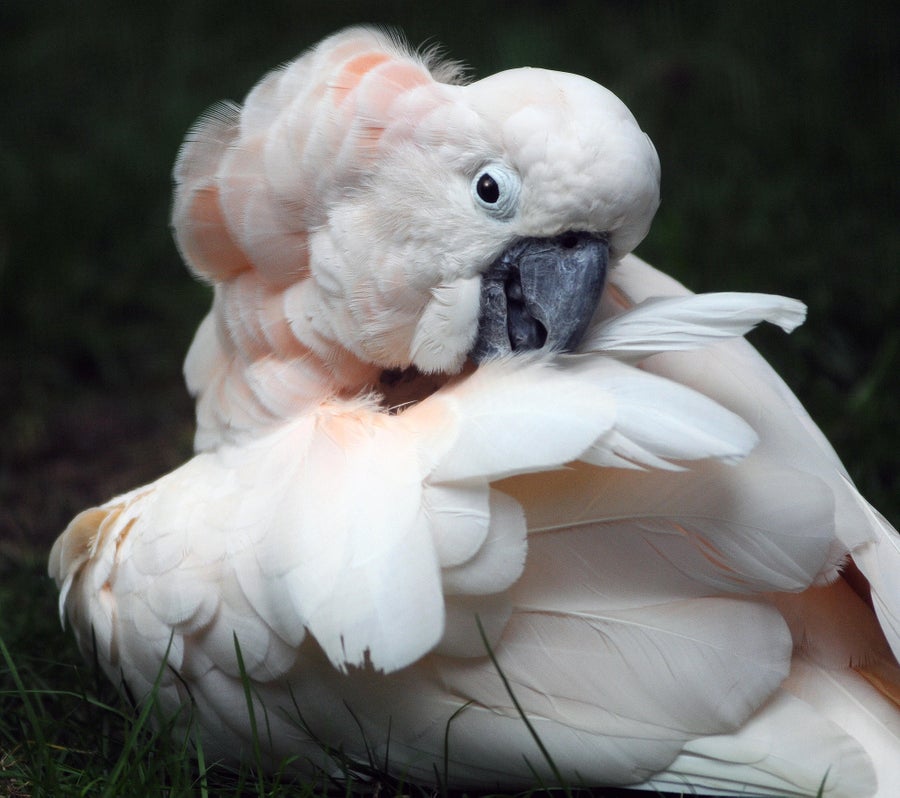
The Salmon-crested Cockatoo, native to Indonesia, is often raised in captivity across the world. When excited, curious or fearful, these birds raise their crest to reveal a vivid plume of salmon-colored feathers.
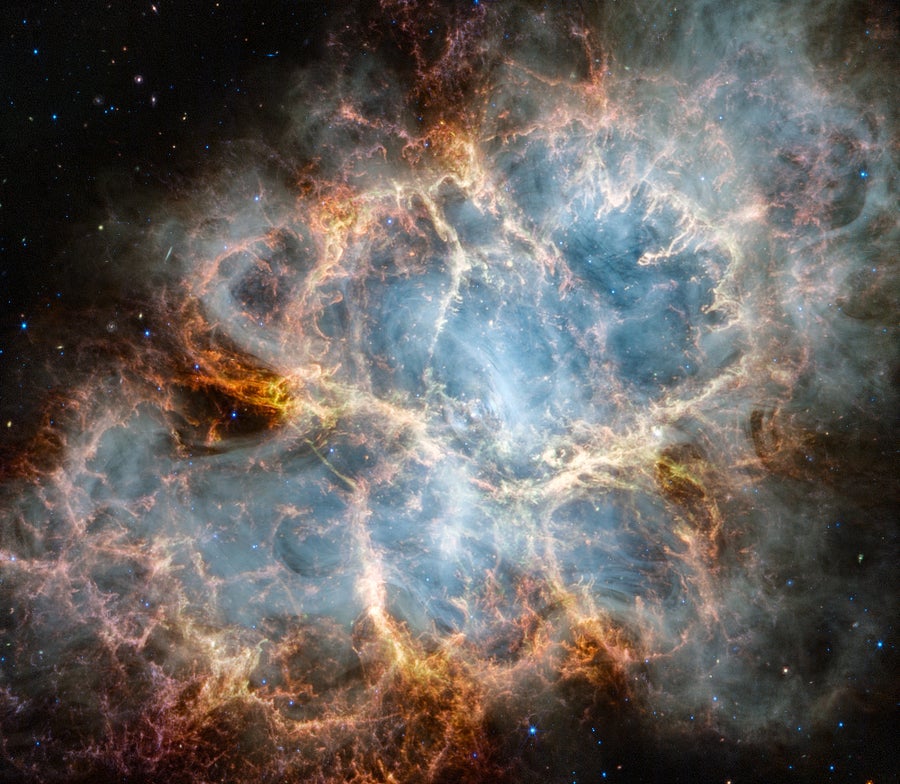
The Crab nebula hosts the remains of a star gone supernova. That explosion, which was briefly visible from Earth in C.E. 1054, left behind a neutron star—along with a lot of gas and dust. The nebula is imaged here in infrared light by the James Webb Space Telescope. The orange represents filaments of doubly ionized sulfur gas; the yellow-white ridges contain particles of dust.
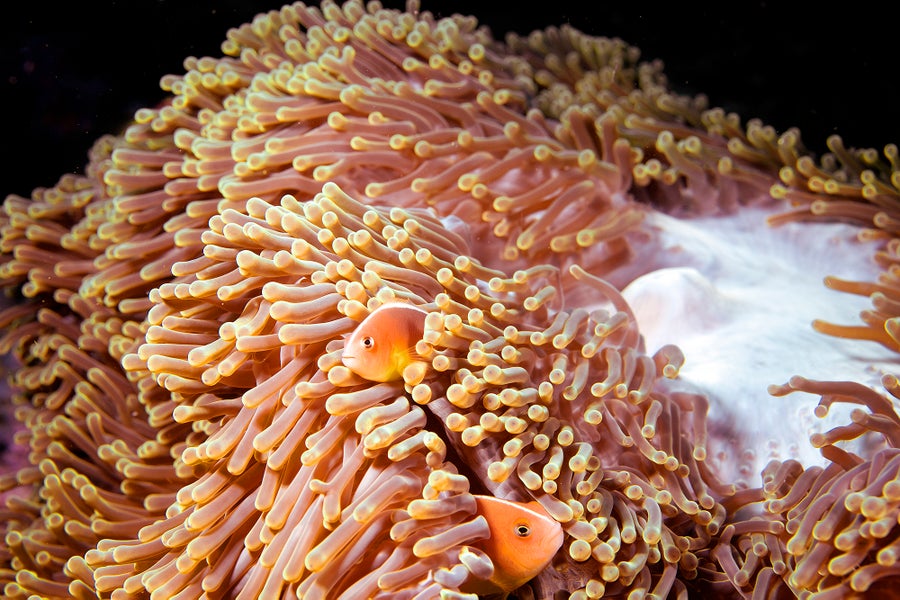
Pink skunk clownfish get their name for the distinctive white stripes on the top of their body. These fish (like the ones above, which were photographed near Thailand’s Similan Islands), have a symbiotic relationship with their anemone host and are immune to its stinging defenses.
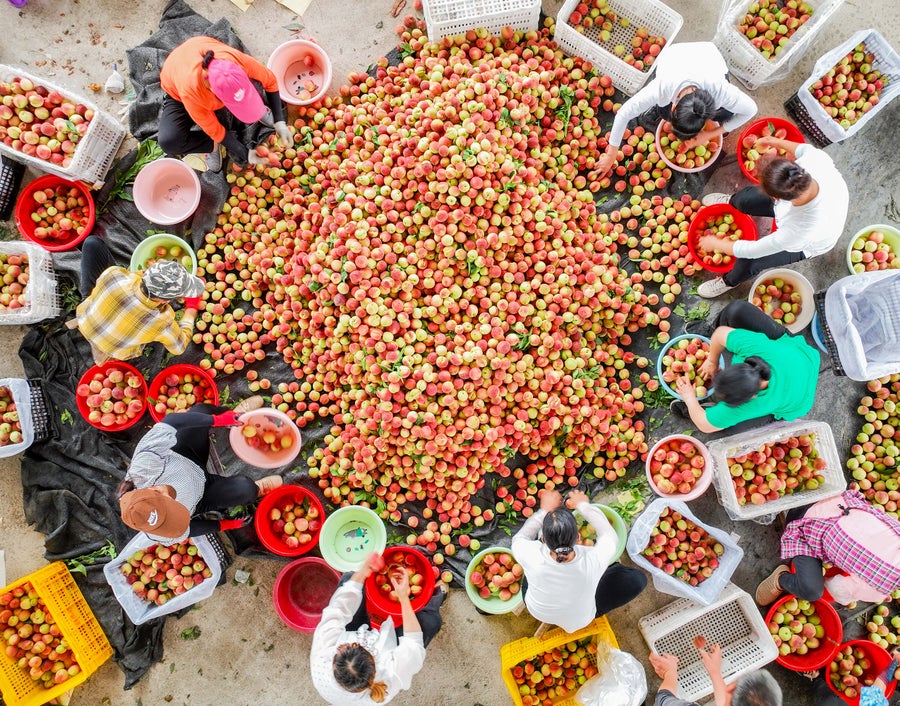
First cultivated in eastern China thousands of years ago, peaches get their characteristic “fuzz” from tiny, hairlike structures called trichomes that protect the fruit from ultraviolet radiation and pathogens.
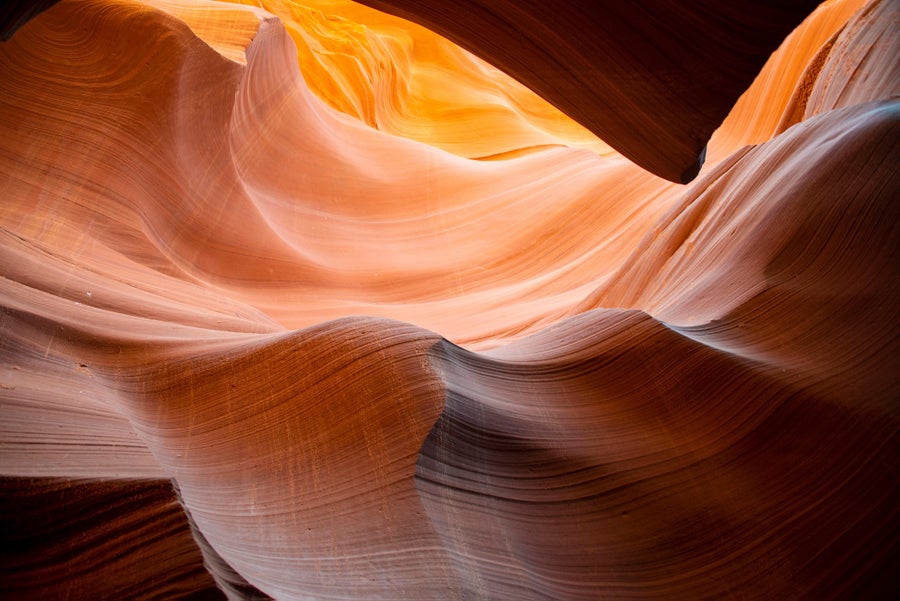
The towering, twisting walls of Hasdez’ twazi’, or Lower Antelope Canyon, were carved by flash floods. Located in the Navajo Nation near Page, Ariz., the slot canyon’s warm colors come from iron oxide, or rust, in the sandstone.
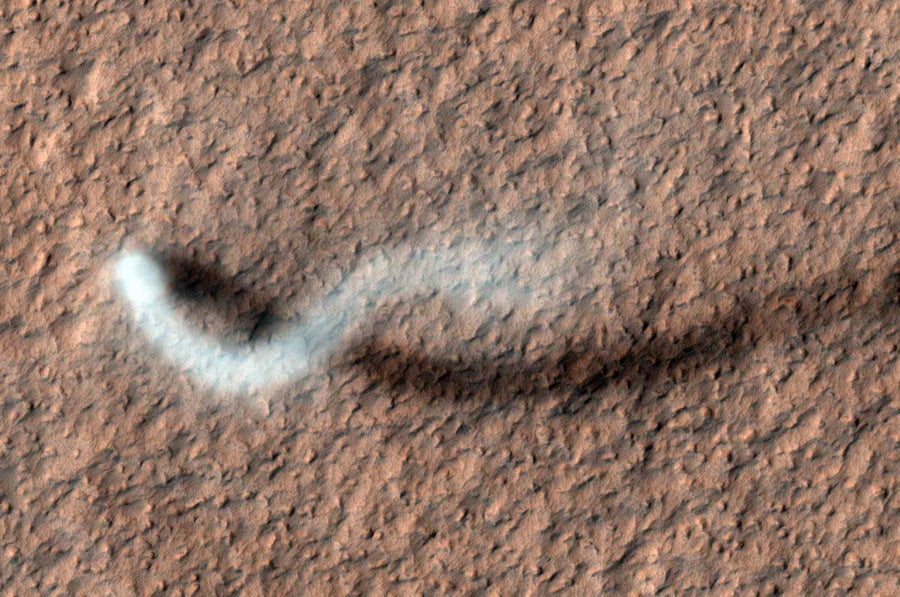
A half-mile-tall dust devil rages across the surface of Mars in this photograph taken by NASA’s Mars Reconnaissance Orbiter in 2012. Like Hasdez’ twazi’, Mars’s distinctive, reddish-tinged dirt comes from oxidized particles of iron.
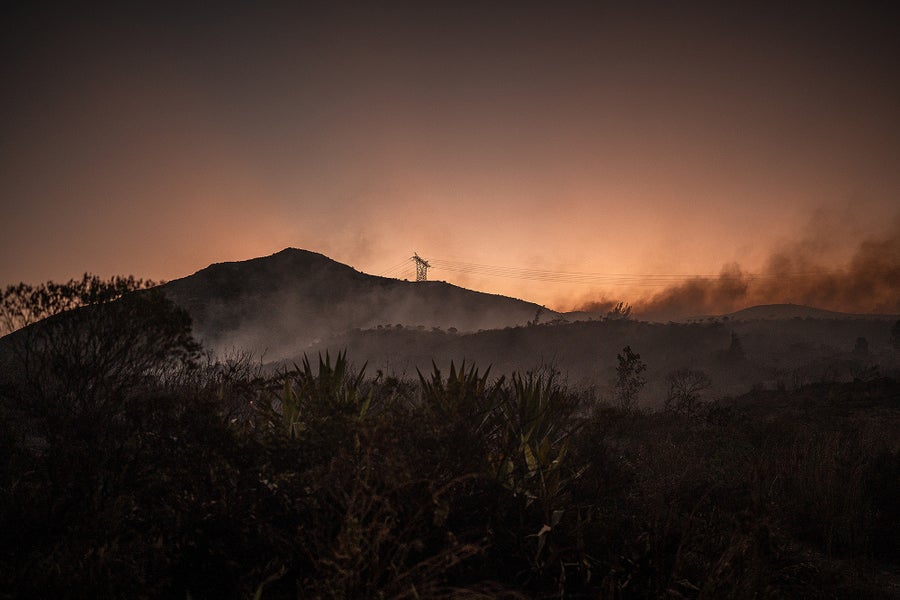
Wildfires raged across Colombia in January, blanketing the capital city, Bogotá, in smoke. Extreme heat and drought attributed to climate change, along with this year’s El Niño climate pattern, have sparked hundreds of wildfires that have led the government to declare a state of emergency.

Red foxes—found across Asia, Europe, Africa and North America—are born with light-colored eyes and dark gray fur. These features morph into the animals’ distinctive amber eyes and pale orange coat at around one month of age.

The volcanic mountain range Kerlingarfjöll, located in the highlands of Iceland, is known for colorful landscapes formed by a volcanic rock called rhyolite. The silica-rich lavas that built this area were so viscous that they left behind steep-sided “lava domes.”
Note: This article have been indexed to our site. We do not claim legitimacy, ownership or copyright of any of the content above. To see the article at original source Click Here









